
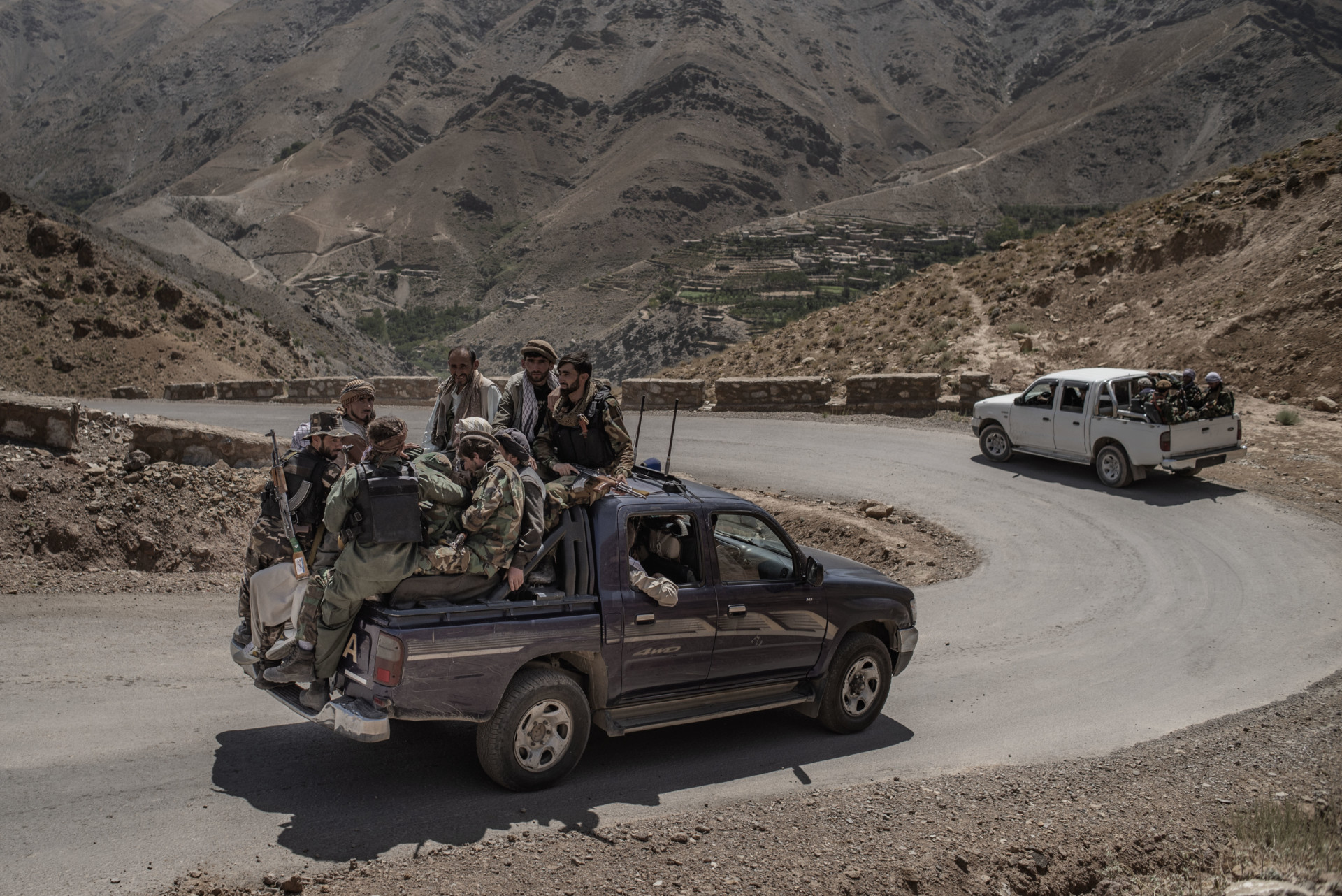
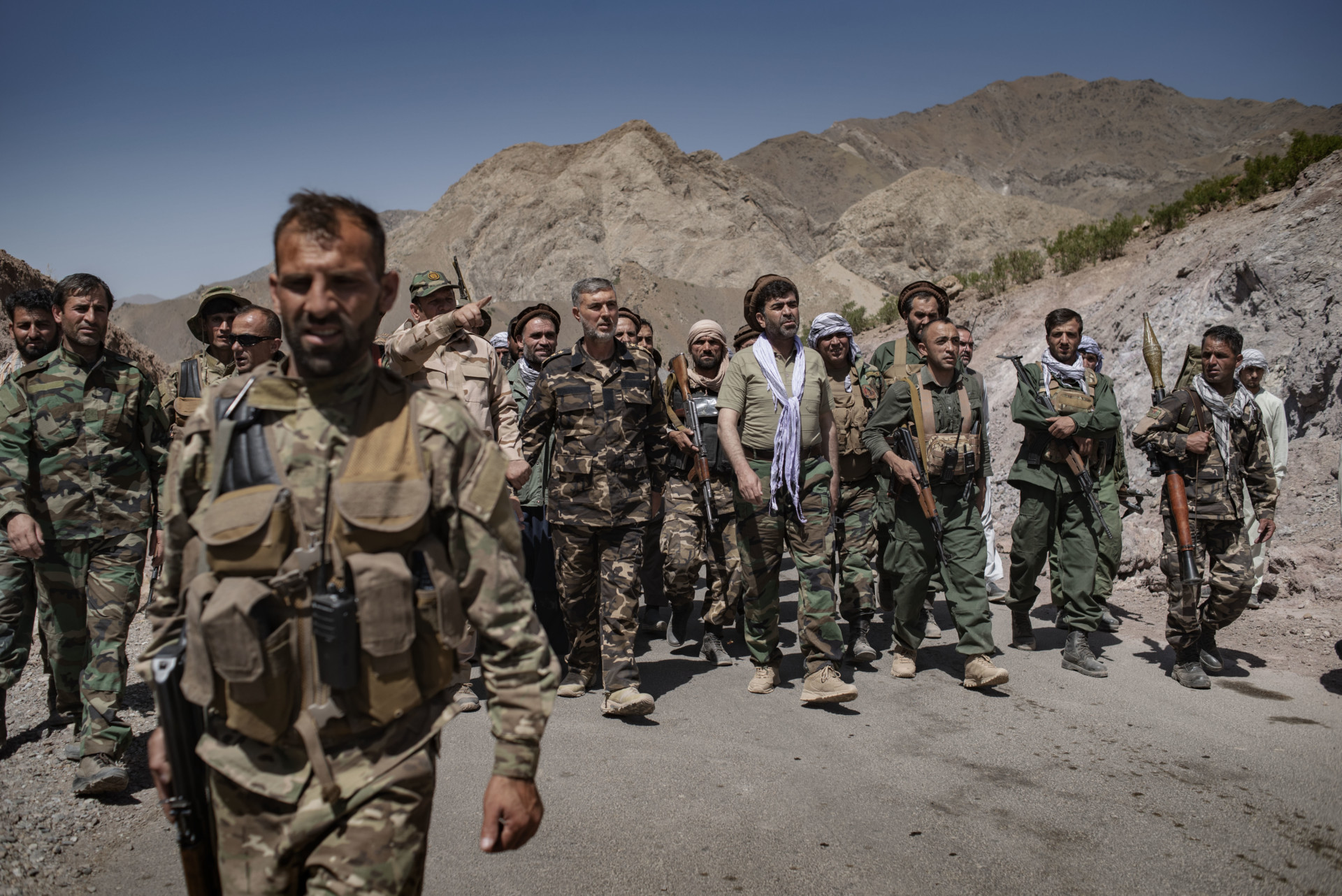
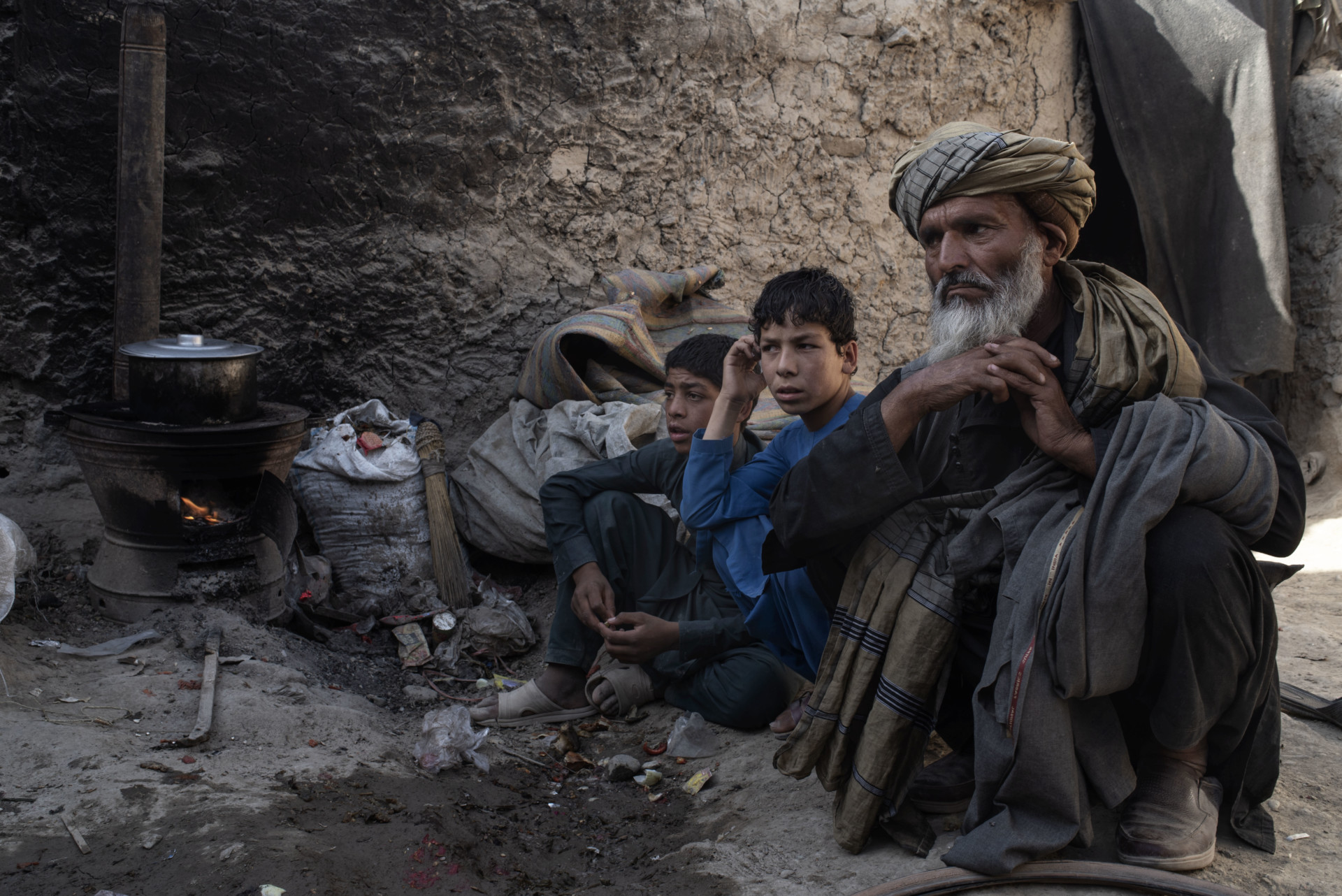
Inside the Dizzying Fall of Kabul to the Taliban
Afghans scrambled from all corners of the country to their capital as a superpower quit the scene. Inside the weeks of chaos and fear before America’s disastrous departure
The day before the Taliban entered Kabul, the line in front of the Iranian embassy in the early hours of the morning was hundreds of meters long. The Turkish embassy had already suspended issuing new visas — so had the Pakistani, the Tajik and the Uzbek embassies. There were lines in front of banks, people anxious to withdraw their savings. It was the aspect that cities assume when war is near. Kabul was afraid.
Long before President Ashraf Ghani fled Kabul, rumors of his flight were rife. It prompted Ghani to appear in a video from the presidential palace, promising to put the armed forces back together and defend the country. The video was short. Beyond motivational words, it offered little of substance. Its main purpose seemed to be to show that he had not escaped. It reassured no one.
“It’s President Ghani’s fault,” some said. “It’s the Americans’ fault,” said others. “Kabul is gone,” said everyone. They know that even if a ceasefire was signed and the Taliban put down their weapons and agreed to participate in a government of national unity, the Taliban had gained enough leverage from their military victories to become the de facto masters of the country.
Rahimullah, 35, tried to knock on the doors of the Turkish embassy twice in the previous two weeks. He has a good job in a construction company. He has always kept a low profile; he had nothing to hide from the government or the Taliban. He built a house with his savings. He is married with a two-year-old son. He doesn’t want to leave, but his wife insists: “At least you leave, and leave us here. There are already too many widows in Afghanistan.” He received a call from a distant cousin in Mazar-e-Sharif, asking for refuge in Kabul for herself and her family. She was worried and wanted to flee to the capital because, she said, “in Herat the Taliban are preventing young girls from entering the university and forcing families to hand over their daughters, even very young ones, to the fighters.” For weeks, Kabul had been waking up trying to parse news from rumors.
Afghan’s would-be defenders had been falling with the predictable ease of dominoes. Shortly after promising a steadfast defense of Herat, the former Northern Alliance warlord Ismail Khan appeared in a video, encouraged to speak by a Taliban fighter, to make a political speech, an invitation to mediation, a public request to end hostilities. The change in tone from the “Lion of Herat” was likely the result of the negotiations that went on in the shadows throughout Afghanistan, both a consequence and cause of the Taliban’s swift advance.
The worst news, however, was the fall of Maidan Shahr, the capital of Wardak province, a gateway to Kabul. The accounts vary. For some in Maidan Shahr, the special forces fought all night and resisted fiercely; for others, the Taliban took the governorate and the police station without firing a shot. The combined Western-trained Afghan security forces number around 350,000, outnumbering the Taliban 4 to 1. But they were demoralized and trained for a very different kind of war, overly reliant on airpower. The Taliban succeeded more through fear and co-optation than through the use of force.
Last week in Wardak, we witnessed a funeral for two soldiers killed in a nighttime ambush by the Taliban. The two coffins were laid out in a room adjacent to the Afghan army special forces base. About 50 men prayed on their knees. The sight of two Westerners who arrived in Afghanistan to tell the consequences of the withdrawal of U.S. troops caused unconcealed hostility among Afghans. “You invaded us, you gave us the illusion of freedom, you left and now you have resumed bombarding us with your B-52s. Go away, you are no longer welcome,” shouted a man from the back of the room. The others, first silent, echoed “go away.”
At the office of Gov. Lawang Faizan, a surreal mix of defiance and disbelief prevailed. “I’m not just the administrator of this district,” said Faizan, sitting in his sumptuous office. “I am also the head of our armed forces, of our men who took up arms to defend the cities.” He exhorted his men as a parade of citizens and soldiers filed in to receive their stipends. A few hours later, Faizan received the minister of the interior at the special forces’ military base. He was trying to unite the army with local militias to create a common front to defend Kabul. But it all rang hollow. One of his associates told us that district officials had packed their bags, ready to escape before the Taliban arrived.
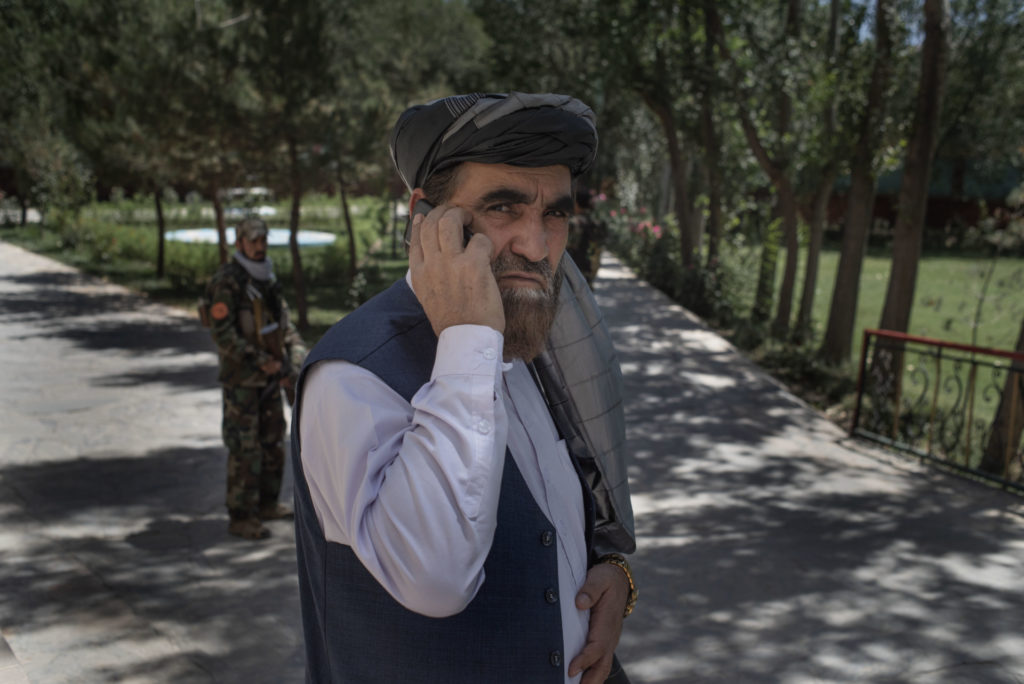
And so they did on Aug. 14, when Maidan Shahr finally fell. There was some shooting, but three days after our meeting in his glitzy office, the governor, who portrayed himself as the bulwark resisting the Taliban, had abandoned the front line and left the district.
And so it goes. The notables leave, ministers resign, the government exits, the West evacuates. But leaving is not an option available to most Afghans. They don’t have the resources. Most stay.
There is no way out, they say, and there is nowhere to go.
Yet every day 2,000 people lined up at the passport office. Musleima Amoni, who heads the office, is about 50. A stout woman, she has a phone in her hand and one in her pocket. Two soldiers escort her every step. She has a commanding presence. She sat in an employee’s seat and asked questions of the people in the line. She wanted to restore a sense of normality. But the air was uncertain, the faces tense. “They are normal people,” she said, “they want to have their documents in order, that’s all.” Amoni didn’t want to give the impression of her people on the run. She was also a public official, so tried to represent her doomed government.
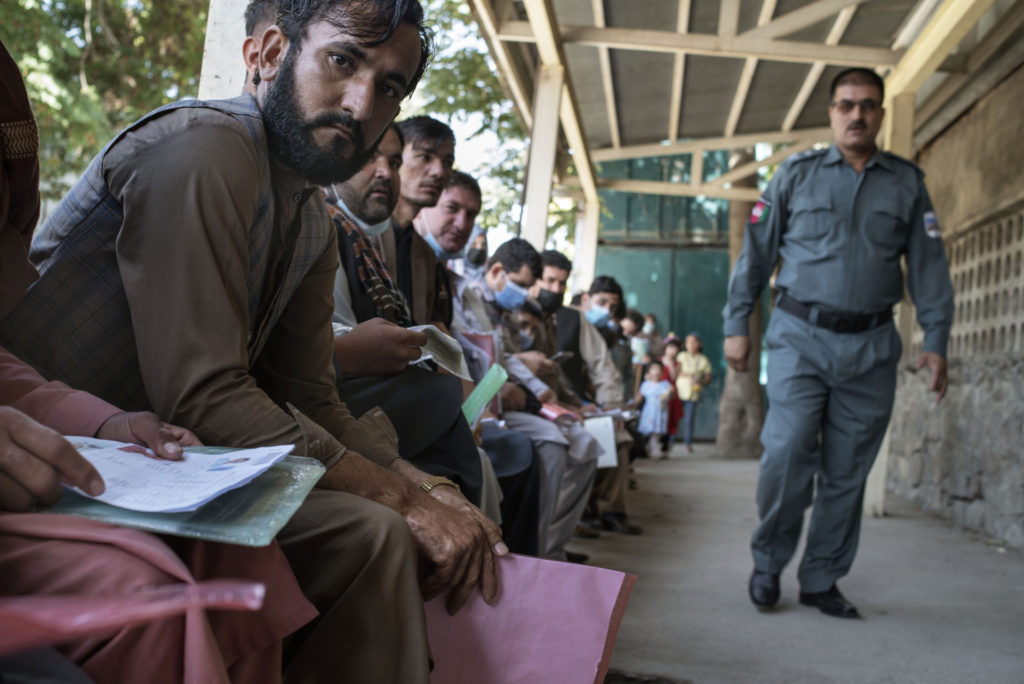
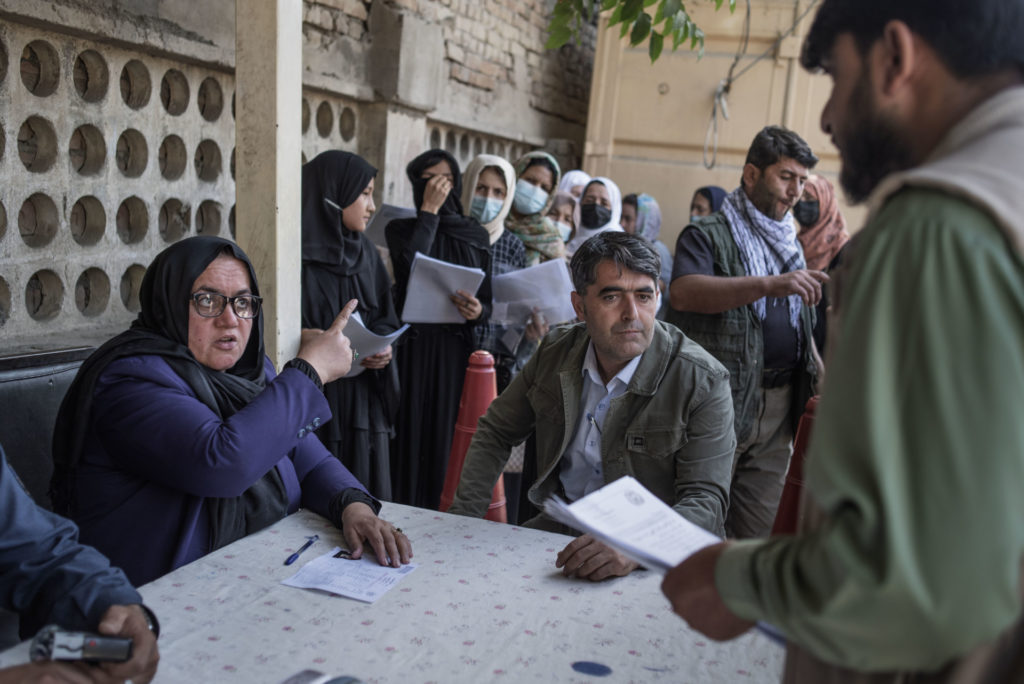
As Amoni stamped and signed documents, an officer approached us. “It is not true that only 2,000 people arrive here every day,” he said. “They are more than double that number. They want to be ready for all eventualities. They start queueing at three in the morning. But a valid Afghan passport, without a visa, is worth nothing.”
The faces of the people in the line were dark. There were many young people, well-dressed and educated; in their hands were carefully folded documents, enclosed in plastic folders. There were degrees, diplomas and certificates from language courses. They wanted to show they are educated, that they were building their future and deserved to leave.
Abdel Tahir, 26, had arrived in Kabul a week ago, on the run from Lashkar Gah. Before speaking about his escape, he showed his degree. He is an engineer. “What does a 20-year-old think when he starts studying? He thinks about his future, he thinks about making plans, he thinks about making himself a better person. Well, I did. And I didn’t just study for myself, I studied for my country. It was my way of saying: I am here for an Afghanistan liberated from obscurantism. And now here we are, at the starting point again.”
Abdel Tahir spoke loudly. He wanted others to hear him, or maybe he was just venting. What he saw in Lashkar Gah is the last thing he wanted to talk about. “The future,” he said, “we should talk about the future, yet our life is a constant retreat into the past.” In Lashkar Gah, his father had a mechanical workshop that was hit by the fighting. Two weeks ago, their neighbor was hit by shrapnel. There was no way to reach the hospital, and he died in front of his wife and his two young children.
Abdel Tahir’s father put some savings in his pocket, saying: “Go to Kabul and try to save yourself.”
He did — to live a new life as an internally displaced person, with all the uncertainties and indignities it brings. He is paying for a room in Kabul, has no possessions, no job. “I don’t know how long I can afford to sleep in this guest house without a job,” he said. “I don’t want to leave the country illegally. But I can’t stay here, seeing my sacrifices and those of my family incinerated by a group of extremists.”
In recent weeks, nearly 40,000 people from besieged cities have arrived in Kabul. They are the lucky ones because they can afford to pay for a seat in a collective taxi where prices have nearly tripled in recent weeks. A bus ticket from Lashkar Gah to Kabul used to cost $5, now it costs $13.
When evening falls, in the district of Sarai Shamali, on the northern outskirts of the city, the congested traffic is joined by trucks, buses and private vehicles transporting the displaced. On the roofs of cars there are bags, suitcases, boxes, blankets, appliances, cradles, gathered in a hurry and tied with ropes. They stop on the side of the road. Children get out and spread blankets on the earth. That blanket becomes home, the space where they will spend the following hours, days, weeks, perhaps months.
Mohammad Gul escaped from Kunduz with his wife and three children. The youngest’s sleep is disturbed by flies while the oldest kisses her on the forehead. Gul was a street vendor in Kunduz. His family home was hit by a rocket, so he collected his savings and two small bags with the children’s clothes and fled to Kabul. “The Taliban prevent people from leaving their homes. I just wanted to save the children, but now that I have saved them, what will become of them?”
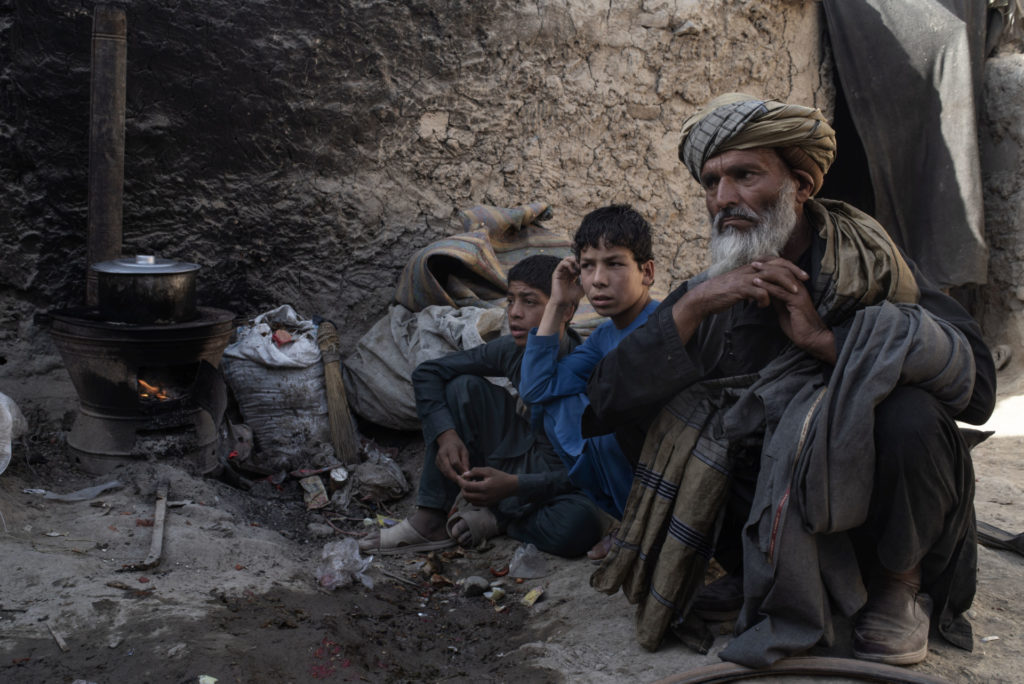
A few meters away, two women cover their faces, support each other and cry. They are unaccompanied because their husbands are Afghan army soldiers who had remained in Kandahar.
At 6 p.m., more cars start arriving. Someone brings bread, someone brings kebabs for children, someone distributes packaged meals, while armed police officers try to protect the cars. Men and children scream, yank each other for a bag of bread, for an extra blanket. Babies cry. There’s no milk. Women who hold them to their chests cry with them, opening their palms, but too dignified to ask. The humanitarian crisis in Afghanistan summed up in a harrowing juxtaposition: the children’s cry of hunger combined with their parents’ desperate silence.
On Aug. 15, when Kabul finally fell to the Taliban, it came as an anticlimax. They met no resistance. Rumors had swirled in earlier days of summary executions, women forced into marriages, girls forced to abandon studies. But the presentable face of the Taliban — their “Doha-version” — was waging its own propaganda war, using social media to exhort its foot soldiers to respect citizens and buildings. On Aug. 13, Mullah Mohammad Yaqoob, son of the group’s founder, Mullah Mohammad Omar, released an audio message asking militiamen to respect those who surrender and to protect public offices so they can continue providing services. In his first broadcast after the fall of Kabul, the new interim president Mullah Abdul Ghani Baradar also struck a decidedly nonhostile tone. “We have reached a victory that wasn’t expected,” he said in a message to the Taliban. “We should show humility in front of Allah. … now it’s time for testing — now it’s about how we serve and secure our people and ensure a good life for them to the best of our ability.”
The broadcasts seem aimed as much at Afghan citizens as at foreign powers.
But foreign powers aren’t taking any chances for now. Western embassies rushed to evacuate their citizens, including international aid workers, compounding the problems for Afghans. The large internally displaced population will now have to make do without foreign aid. We spent the night at the Italian embassy in the Green Zone, with orders to evacuate at 12 to the airport. There were 40 of us. At 10 a.m., to assess the safety of the route, Italian troops sent ahead a convoy of cars with our luggage. They returned an hour later. Things were not going well. The streets were swarming with people trying to reach the airport or just desperate to understand what was happening. The embassy was concerned that amid the chaos, the convoy would be attacked by groups that aren’t under the Taliban’s authority. There is also the anger of citizens, who threw stones at the embassy’s armored vehicles. NATO had taken over the airspace, preventing civilian flights from leaving.
Mindful of the risks, the ambassador decided to airlift us to the airport in a helicopter provided by the U.S. embassy. We had to leave our luggage and could only take the video and photographic equipment. The Afghans on the tarmac had to leave their entire lives behind.
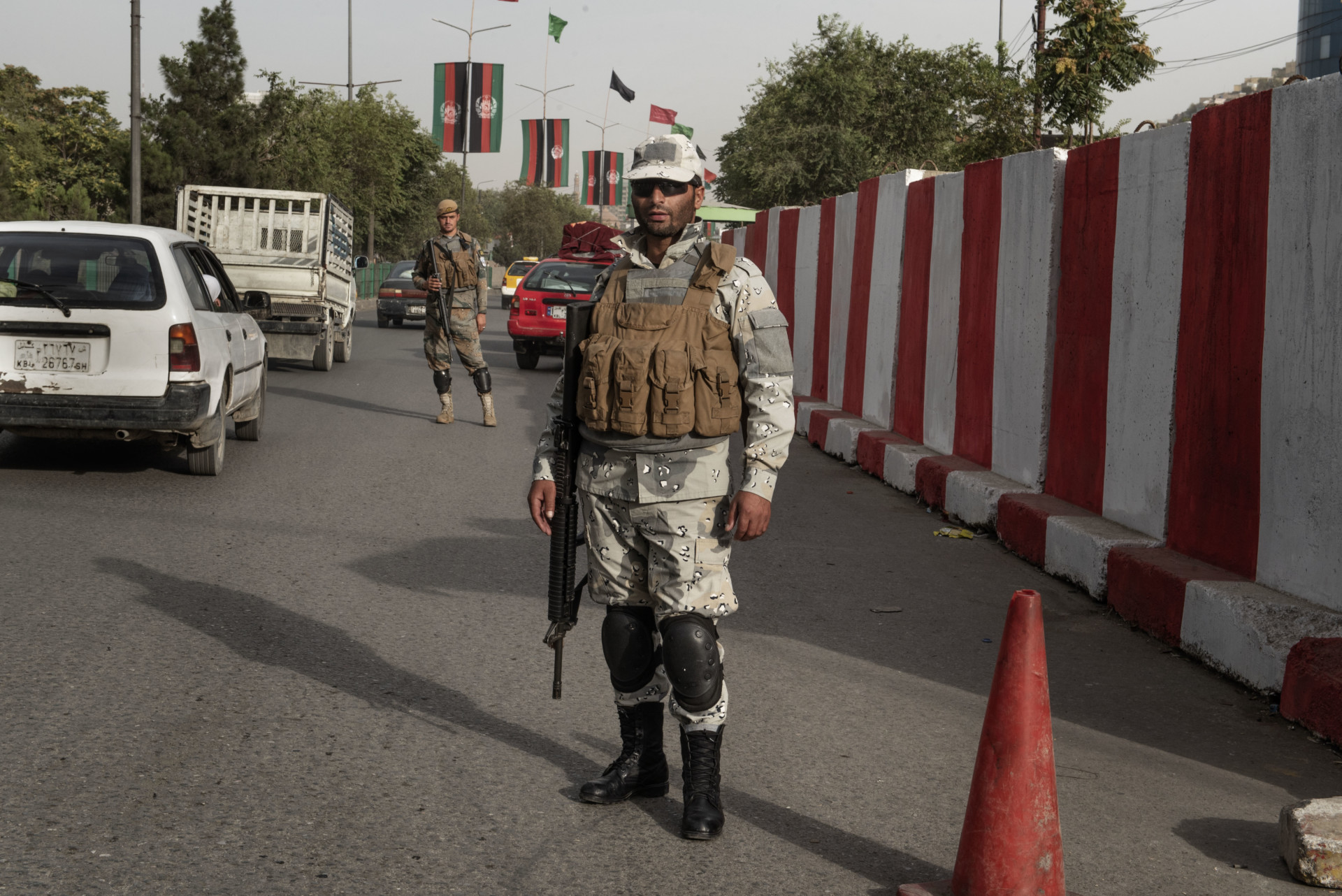
Afghanistan, Kabul / Photo taken by Alessio Romenzi
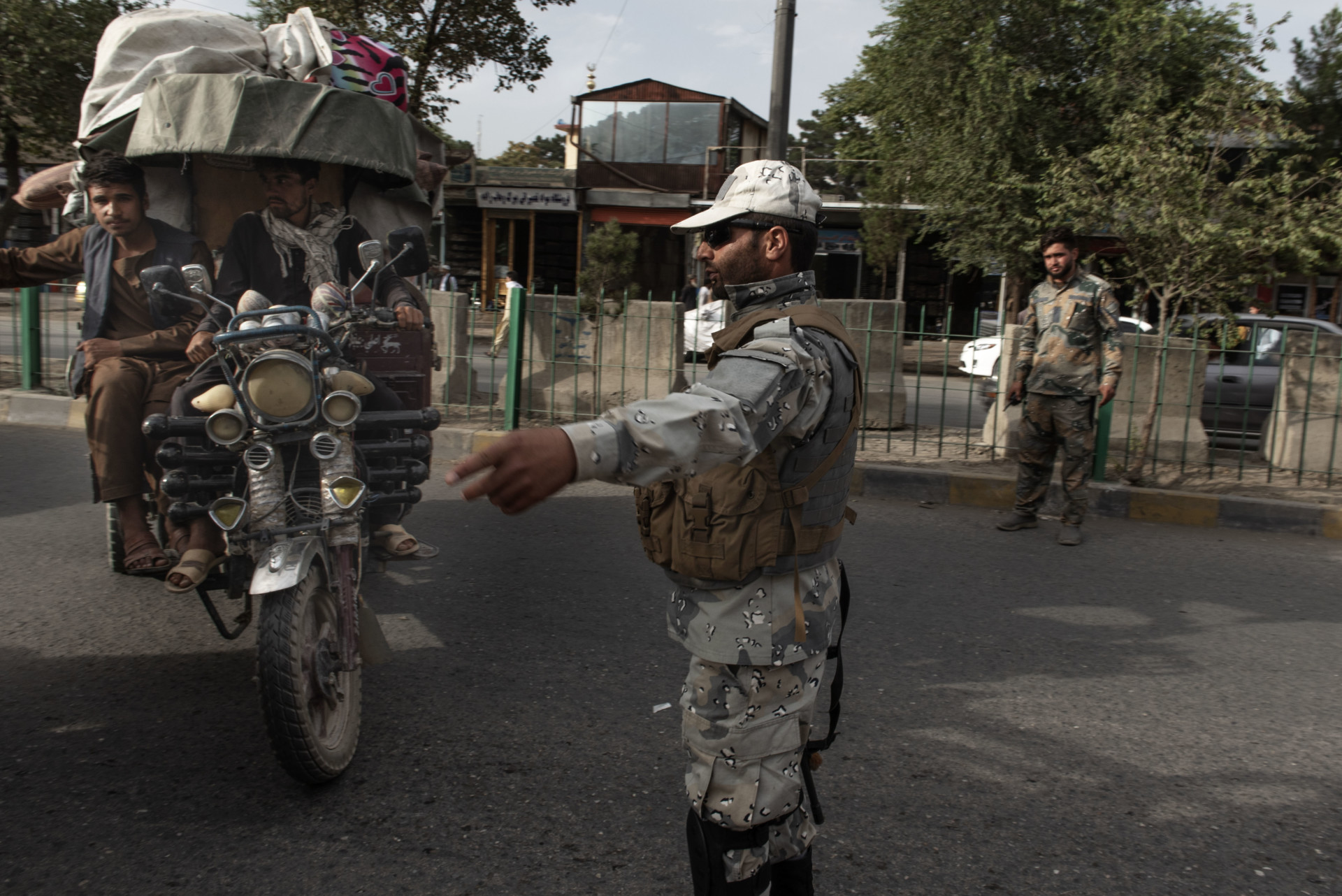
Afghanistan, Kabul / Photo taken by Alessio Romenzi

Soldiers move military vehicles to escort leaders into the valleys / Afghanistan, Parwan / Photo taken by Alessio Romenzi

Abdul Zahir Salangi (center with white scarf), is a Parwan member parliament and also leader of the militia / Afghanistan, Parwan / Photo taken by Alessio Romenzi
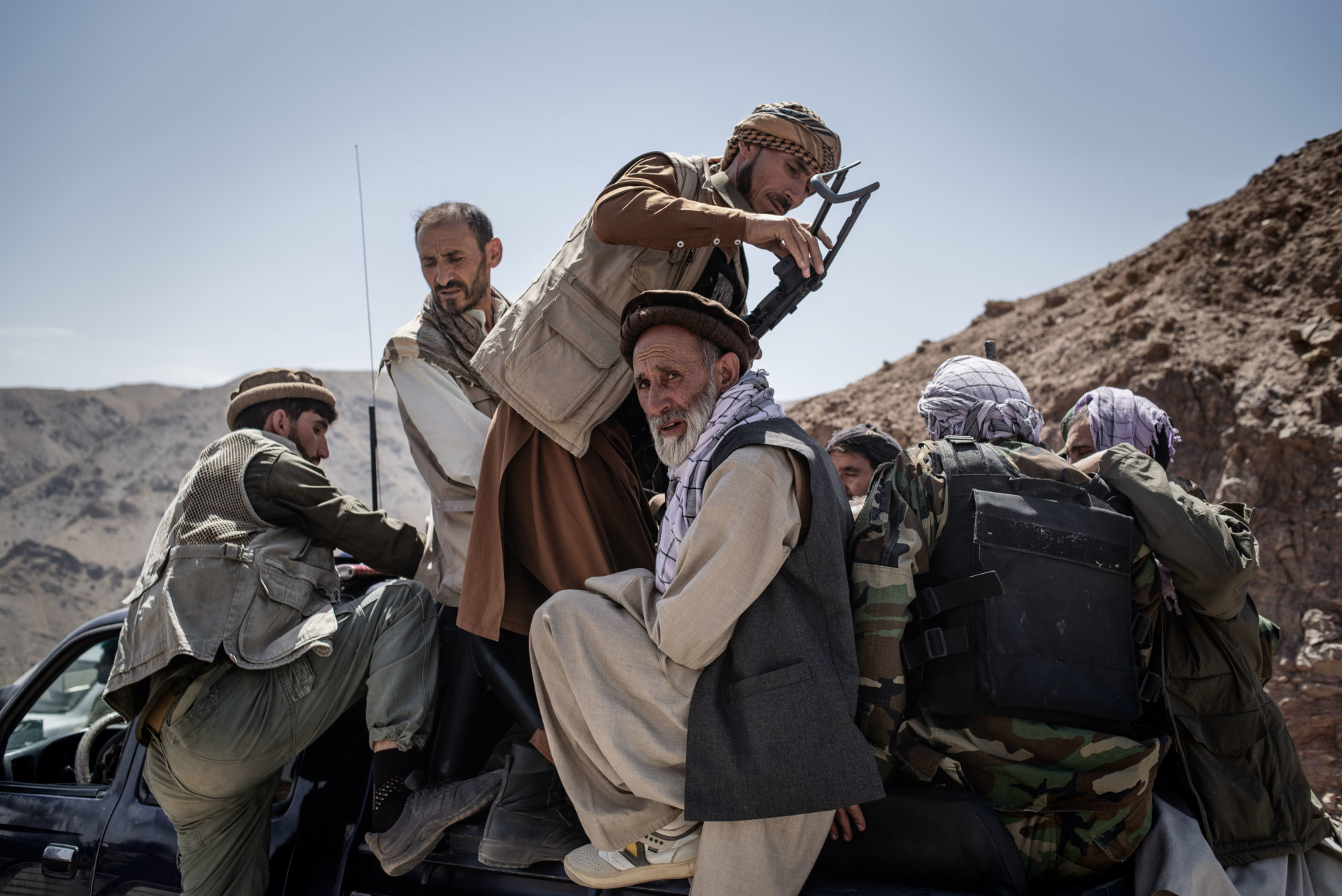
Afghanistan, Parwan / Photo taken by Alessio Romenzi



